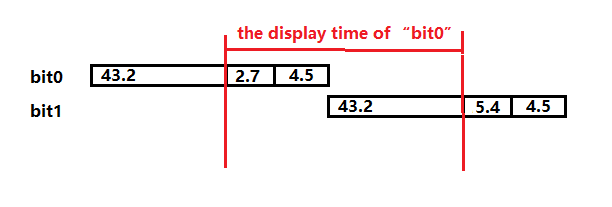Hello,
As you mentioned in the thread “e2e.ti.com/.../dlp7000-how-to-achieve-maxim-pattern-rate-for-dlp7000-8bit-greyscale”, the one of the illumination modulation is as follow:
- MSB -- on for 8 * 43 µs
- MSB - 1 -- on for 4 * 43 µs
- MSB - 2 -- on for 2 * 43 µs
- MSB - 3 -- on for 43 µs
- LSB + 3 -- on for 1/2 of 43 µs
- LSB + 2 -- on for 1/4 of 43 µs
- LSB + 1 -- on for 1/8 of 43 µs
- LSB -- on for 1/16 of 43 µs
There are some questions about how to realize this modulation on the dlp7000.
- First, the illumination of "bit0" is 1/16*43=2.7us,the display time of "bit0" is 2.7+4.5+43.2=50.4us,so it is not equal with 43.2us.so the total time of one frame is longer than 817us.is that correct?If not,could you give me some details of the correct sequence. If it is correct,how to do the second modulation.(LSB-- on for 1/32 of 43us). 43*(1/32)= 1.35us.
- Second,I only found one way to make DMD from "1" to "0",that is "clear block" command.And anything else? If use this command,"mcp(reset)" has to be used,so the length of the display time is more than 43.2us.So that the rate should not equal with 817us.



